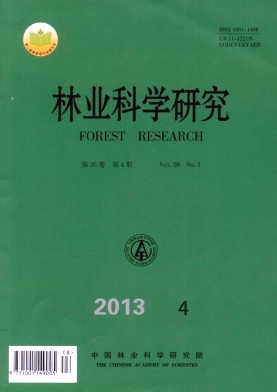|
[1]
|
徐纬英.中国油橄榄种质资源与利用[M].长春:长春出版社,2001
|
|
[2]
|
邓明全,俞 宁.油橄榄引种栽培技术[M].北京:中国农业出版社,2001
|
|
[3]
|
IOC (International Olive Council). Production Techniques in Olive Growing[M]. Madrid Spain:IOC, 2007 |
|
[4]
|
贺善安,顾 姻.油橄榄驯化引种[M].南京:江苏科学技术出版社,1984
|
|
[5]
|
邓振镛,尹宪志,杨启国,等.白龙江沿岸油橄榄气候生态适应性研究[J].中国油料作物学报,2005,27(1):65-68
|
|
[6]
|
张正武,邓 煜,王贵德.陇南油橄榄产业发展现状和对策[J].中国林业,2011(20):41
|
|
[7]
|
邓明全.油橄榄丰产稳产栽培技术研究[J].林业科学研究,2005,18(5):590-594
|
|
[8]
|
Tombesi A, Tombesi S. Olive pruning and training[M]//International Olive Oil Council Practical Techniques in Olive Growing. Madrid Spain:IOC, 2007 |
|
[9]
|
Gucci R, Cantini C. Pruning and training systems for modern olive growing [M]. Australia: CSIRO Publishing, 2000 |
|
[10]
|
Sibbett G S. Pruning mature bearing olive trees [C]//Ferguson L, Sibbett G S, Martin G C. Olive production manual. University of California, Division of Agriculture and Natural Resources Publish, 1994,3353: 57-60 |
|
[11]
|
Cimato A, Cantini C, Sillari B. A method of pruning for the recovery of olive productivity[J]. Acta Hort. (ISHS), 1990, 286: 251-254 |
|
[12]
|
Metzidakis I. Effect of regeneration pruning for the recovery of olive productivity and fruit characteristics in ten olive cultivars[J]. Acta Hort. (ISHS), 2002, 586: 333-336 |
|
[13]
|
Lavee S. Biennial bearing in olive (Olea europaea)[J]. ANNALES Ser hist nat, 2007, 17(1): 101-112 |
|
[14]
|
Vossen P, Devarenne A. Pruning olive trees: how to minimize alternate bearing and improve production[J]. University of California Cooperative Extension First Press: Newsletter of Olive Oil production and Evaluation, 2007, 2(3): 1-4 |
|
[15]
|
Palliotti A, Famiani F, Proietti P, et al. Effects of training system on tree growth, yield and oil characteristics in different olive cultivars[J]. Acta Hort. (ISHS), 1997, 474: 189-192 |
|
[16]
|
Ben Rouina B, Omri A, Trigui A. Effect of a hard pruning on trees vigor and yields of old olive orchards[J]. Acta Hort. (ISHS), 2002, 586: 321-323 |
|
[17]
|
Preziosi P, Proietti P, Famiani F, et al. Comparison between monocone and vase training system on the olive cultivars Frontoi, Moraiolo and Nostrale di Rigali[J]. Acta Hort. (ISHS), 1994, 356: 306-310 |
|
[18]
|
Lodolini E M, Endeshaw T S, Gangatharan R, et al. Olive fruit set in central Italy in response to different pruning systems[J]. Acta Hort. (ISHS), 2011, 924: 195-201 |
|
[19]
|
Silvestri E, Bazzanti N, Toma M, et al. Effect of training system, irrigation and ground cover on olive crop performance[J]. Acta Hort. (ISHS), 1999, 474:173-176 |
|
[20]
|
Gucci R, Cantini C, Luti L, et al. Performance of an olive orchard managed by coppicing for 20 years[J]. Acta Hort. (ISHS), 2001, 557: 261-264 |
|
[21]
|
Visco T, Molfese M, Cipolletti M, et al. The influence of training system, variety and fruit ripening on the efficiency of mechanical harvesting of young olive trees in Abruzzo, Italy[J]. Acta Hort. (ISHS), 2008, 791: 425-429 |





 DownLoad:
DownLoad: